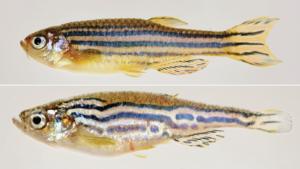Israeli researchers find evidence of fig and olive trees that were domesticated 7,000 years ago, bearing far-reaching social and economic implications for the Chalcolithic Age people of Tel Zaf
Jun. 16, 2022 6:01 AM
https://trinitymedia.ai/player/trinity-player.php?pageURL=https%3A%2F%2Fwww.haaretz.com%2Farchaeology%2F2022-06-16%2Fty-article-magazine%2F.premium%2Fworlds-earliest-domestication-of-fruit-trees-reveals-complex-society-in-jordan-valley%2F00000181-6895-d406-abb1-ea972b3e0000&subscriber=0&isDarkMode=0&unitId=2900001646&userId=9b3cd922-9291-48f3-80d3-9ad935f95ae0&isLegacyBrowser=false&version=20220614_2b0e703b1c35dc27923efad982d90287089da03e&useCFCDN=0&themeId=190
The olive tree is not native to the Jordan Valley in antiquity. Yet now traces of it are reported in the 7,000-year-old site of Tel Zaf in the valley, further supporting the theory that olives were among the first fruits to be domesticated and right here in Israel, a joint team from Hebrew University and Tel Aviv University reported in the Nature journal Scientific Reports on Thursday.
The team also identified ancient fig branches, further suggesting domestication
The identification of the fruit trees stemmed from analysis of charcoal found by archaeologists at the Chalcolithic site, following previous work in 2020 that identified olive trees in Tel Zaf 6,500 to 7,000 years ago based on fossil pollen analysis.
Archaeologists identified the fruit trees from analysis of charcoal found at the Chalcolithic (Copper Age) site, following previous work in 2020 that identified olive trees in Tel Zaf 6,500 to 7,000 years ago based on fossil pollen analysis.
Dr. Dafna Langgut, a specialist in microscopic identification of plant remains at the Department of Archaeology & Ancient Near Eastern Cultures and the Steinhardt Museum of Natural History at Tel Aviv University, analyzed the pieces of charcoal to identify which plants were being used by the people living there.
“While the fig is native to the valley, its branches had little value as either firewood or for making tools or furniture,” Langgut explains. Therefore the people had no obvious reason to gather large quantities and bring them to the village. Possibly, she suggests, the fig branches resulted from pruning, a method still used today to increase the yield of fruit trees.

Thus at Tel Zaf the researchers have found what may be the earliest evidence for the domestication of fruit trees, alongside some of the earliest stamps – suggesting the beginnings of administrative procedures.
“As a whole, the findings indicate wealth, and early steps toward the formation of a complex multilevel society, with the class of farmers supplemented by classes of clerks and merchants,” according to Langgut.
Langgut’s analysis found remnants of local species that were growing naturally in that area such as the Mount Tabor oak and tamarisk. But the discovery that wood from olive and fig trees was there too sheds a new light on how agriculture developed there.
“Olive trees grow in the wild in the land of Israel, but they do not grow in the Jordan Valley,” Langgut said. “This means that someone brought them there intentionally – took the knowledge and the plant itself to a place that is outside its natural habitat.”
The excavation, directed by Prof. Yosef Garfinkel of the Institute of Archaeology at the Hebrew University of Jerusalem, led to the discovery of a prehistoric settlement there 6,700-7,200 years ago.
“When people bring plants and water them, not all of them are going to survive. Some will die, and those that are left are compatible – and then their genetics start to change,” Garfinkel said.

Other ways Tel Zaf was special at the time include the discovery of large houses with courtyards, each with multiple silos for storing grain, Garfinkel said.
“Storage capacities were up to 20 times greater than any single family’s calorie consumption, so clearly these were caches for storing great wealth,” he added. “The wealth of the village was evident in the production of elaborate pottery, painted with remarkable skill. In addition, we found articles brought from afar: pottery of the Ubaid culture from Mesopotamia, obsidian from Anatolia, a copper awl from the Caucasus, and more.”
“They were able to afford to grow and plant trees, which they knew would eventually mean they would have better food,” Garfinkel said. “Domesticating fruit trees can’t be done under pressure.”
Fruit domestication would have had far-reaching social and economic implications. An olive orchard can exist for centuries, and to maintain it, a system to manage ownership and inheritance rights is required.
Local residents’ relative wealth explains their ability to grow fruit. Unlike wheat or other therophytes, which complete their life cycle in a single year, the domestication of fruit trees demands time and effort. “The domestication of fruit trees is a process that takes many years, and therefore befits a society of plenty, rather than one that struggles to survive,” Langgut said.




